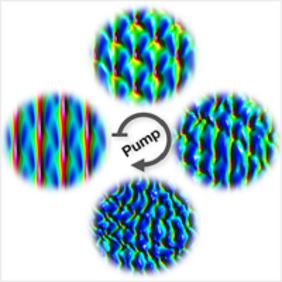Optical experiments reveal a chaotic behavior in light waves that give an idea of the mechanisms of appearance of many types of extreme nonlinear phenomena.
Abstract : Extreme events such as severe floods, earthquakes, breaking waves or financial crises are characterized by complex dynamics and abrupt transitions from one state to another that makes them difficult to study. One of the first ways to study these phase transitions is to study the spontaneous emergence of self-organized models, a field of exploration well suited to fiber laser cavities. However, the behavior of these models in highly non-linear situations, in which extreme events occur, remains little explored. We use a fiber optic ring resonator to observe and theoretically confirm a possible universal scenario of the appearance of rogue waves induced by the so-called highly developed turbulence.
Light that revolves around in an optical resonator generates, under certain conditions, a frequency comb, a light source whose spectrum has many equidistant spectral lines. The continuous light source input is then transformed into a periodic wave inside the resonator.
By increasing the power of the input, we observe two changes in the spectrum. First, we observe intermittent changes in periodicity that reflect the onset of transient turbulence (or spatiotemporal intermittency). But as the input power increases further, the frequency comb loses all periodicity; we were able to capture the threshold of appearance of the proliferating and perpetual turbulence accompanied by intense peaks of light, corresponding to dissipative optical ripple waves. This tells us that these extreme events are preceded by the collapse of the periodic solution.
Our results highlight how optics experiments can be used to develop an understanding of nonlinear dynamics in many branches of science in which critical phenomena and extreme events have universal characters.
Link : https://doi.org/10.1103/PhysRevX.9.011054

